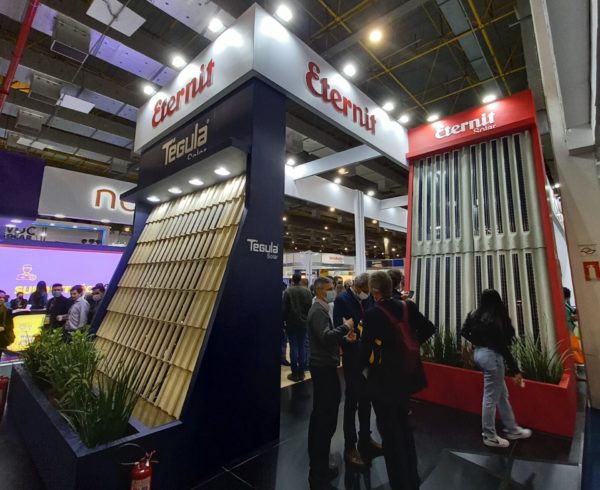Brazilian construction materials provider Eternit S.A. has presented a new solar tile for building-integrated photovoltaic (BIPV) applications at the Intersolar South America event, which was held in October in Sao Paulo, Brazil.
The new product – dubbed BIG-F10 – was launched on the Brazilian market in March and, according to the manufacturer, offers good aesthetics and a harmonized design, and ensures safety, protecting against fire or even breakage of the roofs due to rain and strong winds.
The tile has a power output of 9.1 W and an average monthly generation capacity of 1.15 kWh. It shows an open-circuit voltage of 8.77 V, a short-circuit current of 1.48 A, and a fill factor of 75.46%.

Image: Eternit Brasil
The module is fabricated with 14 monocrystalline solar cells with a size of 78x 2 mm, measures 365 x 475mm, and weighs in at 5.7kg. Eternit specified that 7.5 tiles are necessary to cover a surface of 1m², and that a household with monthly electricity consumption of 100 kWh would require 84 tiles totaling 0.77 kW and covering a surface of around 12 m². With a consumption profile of 80 to 150 kWh, the PV system should rely on 336 tiles totaling 3.08 kW and covering a surface of around 45 m².
Popular content
The tile's temperature coefficient is -0.40% per degree Celsius.
The product requires a minimal inclination of 30 degrees and is available in five colors: ivory straw; colonial beige; red graphite; gray; and pearl gray. The manufacturer also offers a classical version, with a traditional texture made of concrete, and a “resined” product, with thin resin layer with high durability, which it claims keeps the roof clean for a longer time.
This content is protected by copyright and may not be reused. If you want to cooperate with us and would like to reuse some of our content, please contact: editors@pv-magazine.com.



By submitting this form you agree to pv magazine using your data for the purposes of publishing your comment.
Your personal data will only be disclosed or otherwise transmitted to third parties for the purposes of spam filtering or if this is necessary for technical maintenance of the website. Any other transfer to third parties will not take place unless this is justified on the basis of applicable data protection regulations or if pv magazine is legally obliged to do so.
You may revoke this consent at any time with effect for the future, in which case your personal data will be deleted immediately. Otherwise, your data will be deleted if pv magazine has processed your request or the purpose of data storage is fulfilled.
Further information on data privacy can be found in our Data Protection Policy.